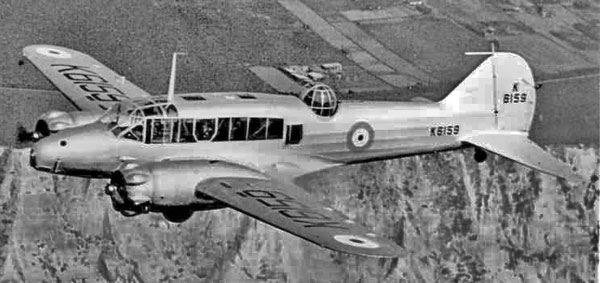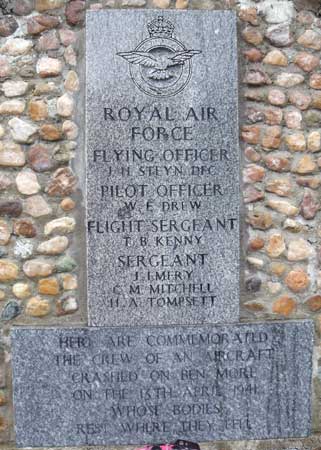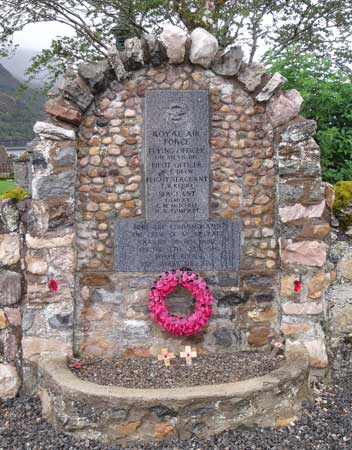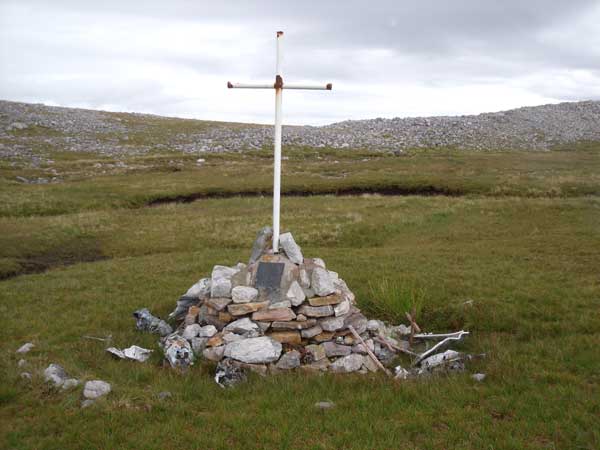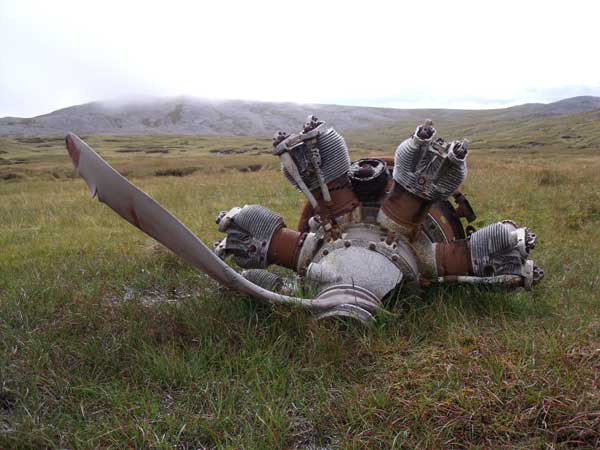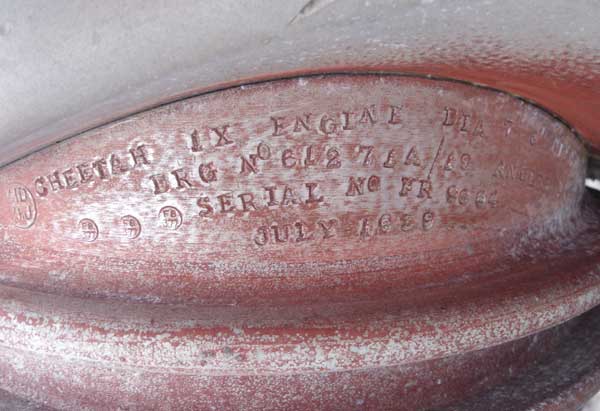Anson N9857 Meall nan Caorach, Ben More Assynt.
This was one crash location that I had been wanting to visit for some years and during a holiday at Lochinver in 2009 I was able to visit the crash site. It is one of only two incidents in Scotland where the crew are buried at the crash site. For these reasons, for anyone else visiting the site please treat the location with the respect it deserves as this is a War Grave and the highest such one in the UK.
Since creating this webpage author David Earl has written a superb chapter about this incident and biographies of the crew in his 2021 published book "Down In The Highlands" and is available through Hanover Publications.
On 13th April 1941 this 19 O.T.U. aircraft took off from Kinloss at 10.18hrs, the crew of six were to undertake a navigation exercise. On board were a number of trainees and flying with them was at least two instructors. The pilot was an experienced bomber pilot awarded a DFC some months earlier and almost certainly posted to Kinloss to act as a pilot in a training role and for a rest from Bomber Command operational flying. After take off they headed West and used Oban as a turning point, from there they were directed to fly to Stornaway, then to Cape Wrath, down to Achnashellach Station in Glen Carron and then the plan was to return to base. A reasonable distance but probably a routine training flight. The crew radioed base at around 13.00hrs to say they were at Cape Wrath but soon after a faint message was picked up to say that the aircraft was icing up and the port engine was loosing power and it had later failed. These icing conditions effected control of the aircraft and its ability to stay in the air with its aerodynamics changed. The weather was to play a further part, this was the worst snow this part of Scotland had reported in 100 years, loosing height and flying in near white-out conditions the aircraft clipped high ground to the North-West of Ben More Assynt, a Munro to the east of the small village of Inchnadamph in Sutherland. The aircraft crashed pretty much straight away into a very boggy but flat section of the mountain range. It is highly probable that many of the crew survived the actual crash despite being severely injured. Beacuse of the very deep snow no trace of the aircraft was found for a period of time. It was not until the 25th May 1941 that a shepherd, a Mr Law, who was tending to sheep in the area came across the wreckage of the aircraft. The crew had been dead for some period of time, their injuries and the extreme cold would sadly have prevented any hope of survival. The body of an airman, Sgt Mitchell, was found some distance to the east of the crash site under a large boulder suggesting that he had attempted to go for help. Unknown to him east took him away from any civilization. The cold and injuries had also taken his life. Had he gone west the distance which would have had to be covered would surely have been too great for him to have survived.
Because of the remoteness and the time since the crew had died it was considered best to bury them on the mountain. A cairn was then erected over their grave. After the War the CWGC visited the location and decided on leaving the crew in their mountain grave. Other such sites are marked by the CWGC style grave marker but this location is without such a marker.
Three other local people lost their lives during this winter because of its severity, their names are not known. I searched Inchnadamph churchyard but found no likely gravestone but this account could well relate to the general Assynt region.
Anson N9857 was delivered as new to 14 F.T.S. on 20th December 1939 and was transferred to 19 O.T.U. on 25th June 1940. The aircraft's AM Form 78 states no other dates or damage assessment other than to record it was struck off charge but without a date beside it.
Pilot - F/O James Henry Steyn DFC RAF (42275), aged 23, of Johannesburg, Transvaal, South Africa.
Observer - P/O William Edward Drew RAF (45356), aged 28, of Barrow-in-Furness, Lancashire.
Observer (U/T) – Sgt Charles McPherson Mitchell RAFVR (992122), aged 31, of Ballater, Aberdeenshire.
Wireless Operator – F/Sgt Thomas Brendon Kenny RAF (551620), aged 20. of Barnsley, Yorkshire.
Wireless Operator / Air Gunner - Sgt Jack Emery RAFVR (976995), aged 20, of Trowbridge, Wiltshire.
Wireless Operator / Air Gunner – Sgt Harold Arthur Tompsett RAFVR (931417), aged 20, of Croydon, Surrey.
A memorial was later erected in the wall of Inchnadamph church to the crew killed in this accident.
James Steyn was commissioned to the rank of Acting P/O on probation on 24th June 1939,
he was graded as P/O on probation on 9th December 1939 and confirmed as P/O on 1st May 1940, he then
rose to F/O on 9th December 1940. He gained his DFC for service with 10 Squadron, Gazetted on 17th January 1941,
after he completed 44 Operational flights. No citation for this has yet been found. He was the pilot of Whitley P5055
damaged by flak while flying with 10 Squadron in late-September 1940.
William Drew was made P/O on probation on 24th February 1941 (with seniority back dated to 5th February 1941).
He was Mentioned in Despatches on 24th September 1941 after his death.
Thomas Kenny was probably acting as an instructor when the crash in the Highlands occurred, he had already survived baling out over France in 1940 and evading capture after finding the French Resistance.
The cairn underwhich lay the graves of the six airmen, as it was when I visited the site in 2009. This memorial was replaced by a white granite stone in 2013.
One of the engines.
Lettering found on one of the propellers.
I believe this to be the base from the aircraft's compass.
The aircraft's turret lay complete at the crash site was removed some years ago and is now fitted to the Anson on display at the Imperial War Museum, Duxford. My thanks to Gary Brindle for this information.
